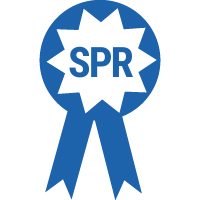Neonatal Neurology: Pre-Clinical Research
Neonatal Neurology 9: Preclinical 3
41 - Role of NKCC1 and KCC2 during hypoxia-induced neuronal swelling in the neonatal neocortex
Monday, May 1, 2023
9:30 AM - 11:30 AM ET
Poster Number: 41
Publication Number: 41.435
Publication Number: 41.435
YUSUKE TAKEZAWA, University of Iowa Stead Family Children's Hospital, Iowa City, IA, United States; Rachel L. Langton, University of Iowa, Iowa City, IA, United States; Samuel Baule, University of Iowa Department of Biomedical Engineering, Iowa City, IA, United States; Bridget Zimmerman, University of Iowa, Iowa City, IA, United States; Stephen Baek, University of Virginia, Charlottesville, VA, United States; Joseph Glykys, University of Iowa Roy J. and Lucille A. Carver College of Medicine, Iowa City, IA, United States

YUSUKE TAKEZAWA, MD, Ph.D (he/him/his)
Research Scholar
University of Iowa Stead Family Children's Hospital
Iowa City, Iowa, United States
Presenting Author(s)
Background: Neonatal hypoxic-ischemic encephalopathy (HIE) can result in life-long disabilities. Hypoxia causes cytotoxic neuronal edema through the entry of water and ions, including Cl-. Since neuronal edema correlates with cell injury and high intracellular Cl- concentration ([Cl-]i) increases seizure susceptibility, preventing these changes during hypoxia could reduce neurological sequelae in HIE patients. Notably, neurons do not have water channels, and their membrane water permeability is low. The cation-chloride cotransporters (CCCs), including KCC2 and NKCC1, move water in different cells, but it is unclear if they do in neonatal neurons.
Objective: To determine the effect of pharmacological modulation of CCCs on neuronal swelling and [Cl-]i in the neocortex (layer IV/V) of neonatal mice (post-natal day 9–13) during prolonged/brief hypoxia
Design/Methods: We used acute brain slices from Clomeleon mice which encode a ratiometric fluorophore sensitive to Cl- and exposed them to oxygen-glucose deprivation (OGD) while imaging neuronal size and [Cl-]i by multiphoton microscopy. We identified neurons using a convolutional neural network algorithm. The changes in neuronal area and [Cl-]i were evaluated with a linear mixed model for repeated measures. CCCs were modulated pharmacologically using CLP257 (KCC2 enhancer), VU0463271 (KCC2 blocker), bumetanide (NKCC1 blocker), or furosemide (broad-spectrum CCCs blocker).
Results: We observed neuronal swelling and Cl- increase starting 10 minutes after OGD, which worsened in prolonged OGD or returned to baseline during reperfusion. Neuronal swelling was dependent on [Cl-]o. We also found that: (1) enhancing KCC2 did not alter neuronal swelling but prevented Cl- increase, (2) blocking KCC2 aggravated Cl- increase during prolonged OGD and worsened neuronal swelling during reoxygenation, (3) blocking NKCC1 reduced neuronal swelling during early but not after prolonged OGD, while it aggravated Cl- increase during prolonged OGD, and (4) furosemide reduced both swelling and Cl- increase in prolonged and brief OGD. However, blocking simultaneously NKCC1 and KCC2 with their specific antagonists aggravated neuronal swelling during prolonged OGD.
Conclusion(s): We conclude that CCCs are involved in water movement in neocortical neurons during OGD in the neonatal period. Blocking NKCC1 decreases neuronal swelling early during OGD. Yet, furosemide is more effective in preventing neuronal swelling than only blocking NKCC1, suggesting additional non-CCC water pathways at this age. Thus, bumetanide and furosemide alleviate neuronal swelling during neonatal HIE.

